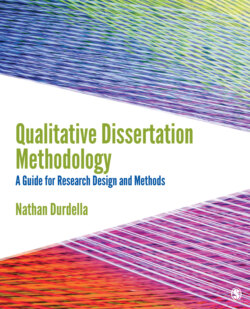Читать книгу Qualitative Dissertation Methodology - Nathan Durdella - Страница 59
На сайте Литреса книга снята с продажи.
Disconnects between students from nonacademic/non-research careers and emerging pressures of the current job market.
ОглавлениеWith over half of Ph.D. graduates accepting their first job offers from employers outside of the academy, many faculty and administrators argue that this is the time to revisit the traditional dissertation (Patton, 2013). In fact, academic job placement and careers in the academy among students in doctoral programs have been on the decline as colleges and universities employ an increasing percentage of faculty on a part-time basis. With over half of faculty in postsecondary institutions now contingent (“Background Facts on Contingent Faculty,” 2016), many recently graduated Ph.D. students look to career opportunities outside of traditional faculty or academic research positions. And as the range of doctoral programs in U.S. institutions of higher education continues to change, conventional research degrees such as the Ph.D. may offer fewer opportunities for career development and advancement for prospective students. For example, education doctorate (Ed.D.) programs—and similar applied doctoral programs in fields across disciplines—generally offer students curricular structures and research requirements directly connected to their work in practice.
Even when students remain in research or university settings as career fields, they may face increasing expectations to immediately apply their research skills and publish products of their research work as doctoral students. For example, in U.K. universities, Jump (2015) recorded a move toward a cluster or bundle of journal-length articles in place of traditional dissertations. What is behind this pattern? Jump cites the “growing pressure on students, particularly in the sciences, to publish their findings prior to graduation—not the least so that they can compete for postdoctoral positions in an increasingly international job market.” So rather than spending an inordinate amount of time and resources on writing a monograph on current literature related to their studies and documenting every painstaking step in the research process from methodology to results, students may be better served by building a series of shorter, journal-length papers that can be disseminated quickly and shared efficiently. While potential issues of co-authorship and absence of detailed steps in the research process in articles may arise with journal articles, faculty advisors argue that requiring students to articulate their roles in studies and maintain descriptive documentation of their methods offers greater support to students in the academic job market.
